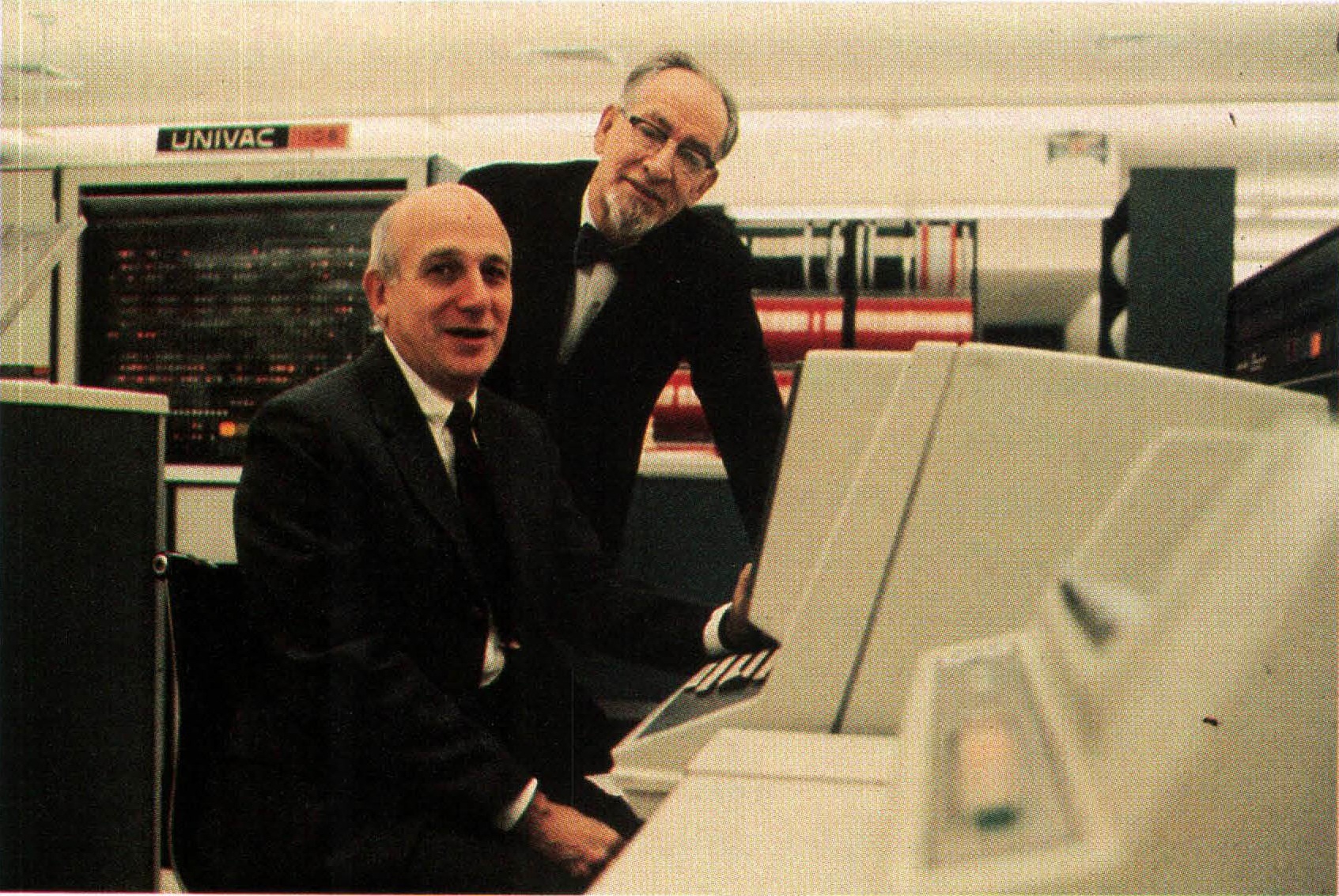Back in the United States, the Moore School had fallen into a nasty quarrel over patent rights. As the financial backers of ENIAC and EDVAC, the Ordnance Department wanted the right to use them, and the technology in them, without payment to the inventors. In other words, the department wanted a royalty-free license, and such a dispensation can be granted only by the rightful inventors. (And only an individual, or individuals, not an institution, can apply for a patent, although the inventor may assign his or her commercial rights to any party.) Who, then, should apply for the patents and who should receive the rights to them? As the machine’s chief inventors, Eckert and Mauchly believed that they should submit the applications and that they, not the University of Pennsylvania, should get the rights and grant the necessary license to the Army. Although the Army, grateful for their work, tended to side with them, the university did not.
Unfortunately for the university, the only patent agreement it had with Eckert, Mauchly, and the rest of the ENIAC staff was a six-line notice in the school’s course catalogue. That notice required the inventor to “assign his rights in the patent to the University upon payment to the patentee of his expense in securing the patent.” It was hardly a watertight contract, and Eckert and Mauchly, who were planning to go into the computer business, tried to circumvent it. They hired an attorney, George A. Smith, who, splitting hairs, argued that the men were really government employees – that ENIAC and EDVAC were designed under government contract and that Eckert and Mauchly were only nominally in the university’s employ. The school had merely supplied the laboratory facilities. “Under this view the University cannot properly consider itself entitled, strictly speaking, to any benefit from the developments,” Smith wrote Harold Pender, dean of the Moore School, in February 1945. “To leave settlement of [patent] questions solely to the University seems hardly fair. The University would be prosecutor, judge and jury in such a case.”
However Jesuitical Smith’s argument, the university decided to give in. The catalog notice wasn’t much of a contract; the quarrel was endangering the ENIAC and EDVAC projects as well as future government contracts with the university, and Pender, who had been a successful businessman before joining the Moore School, sympathized with Eckert and Mauchly’s commercial aspirations and recommended that the university let them keep the rights. But the controversy angered many university officials, particularly John Brainerd, ENIAC’s project supervisor, who regarded the pair’s position as a flagrant violation of academic ethics. A university should be motivated by the pursuit of knowledge, not profit, Brainerd believed, and the proper thing would be for the school to receive the rights and to license them to all comers. Since he wasn’t inclined to labor on a project that promised to enrich only Eckert and Mauchly, Brainerd resigned as the EDVAC project supervisor in early 1946.
Pender, who wished to maintain the Moore School’s close relationship with the government, realized that the institution needed a clear and firm patent policy. In January 1946, he appointed Irven Travis, who had been an assistant professor at the school before the war and a contracts administrator for Naval Ordnance during it, to the new post of supervisor of research. At a few prominent universities, and at most private companies, employees had no patent rights whatsoever, and Travis, with Pender’s backing, decided to establish the same policy at the Moore School. Inventors would not even be entitled to a percentage of the rights – cutting them out of any opportunity to profit from their ingenuity. Moreover, Travis also wanted to limit the faculty and staff’s outside consulting.

Eckert and Mauchly refused to accept these rules and submitted their resignations on 31 March 1946. The EDVAC project which had begun officially the previous October, slowed to a halt, and the machine wasn’t finished until 1952. Meanwhile, the British jumped into the breach and the Moore School lost its leadership in computer technology to MIT and other schools; today, the only signs of its historic role in the development of the computer is a bronze plaque on a side entrance and a few dusty panels of ENIAC, stored anonymously in an out-of-the-way corridor in the basement, along with some other equipment. (Ironically, Travis himself resigned as head of research in 1947 and later became a vice president at Burroughs, where he was in charge of the establishment of a computer division.)
In the case of EDVAC, the patent fight was a three-sided affair, with the university, von Neumann, and Eckert and Mauchly in different corners. In April 1946, von Neumann submitted an official patent claim on EDVAC to the Ordnance Department, including, as evidence, a copy of his “Report on the EDVAC.” Eckert and Mauchly, who had not yet filed an EDVAC patent, were incensed, and the Ordnance Department regarded von Neumann’s claims as unjustified and unethical. However, according to Goldstine, von Neumann was less interested in obtaining credit for himself than in preventing Eckert and Mauchly from tying up the rights for their own corporate use. Goldstine has said that von Neumann, uninterested in personal gain, intended to place his patents in the public domain. Whatever von Neumann’s intentions, the result probably pleased him. For in order to be valid a patent must be filed within a year of the act of invention; any significant prior public disclosure of the invention or of its ideas automatically invalidates the patent. Since von Neumann’s “Report on the EDVAC” had been widely distributed in 1945, the Ordnance Department’s attorneys ruled in April 1947 that EDVAC and the idea of the stored-program computer belonged in the public domain.